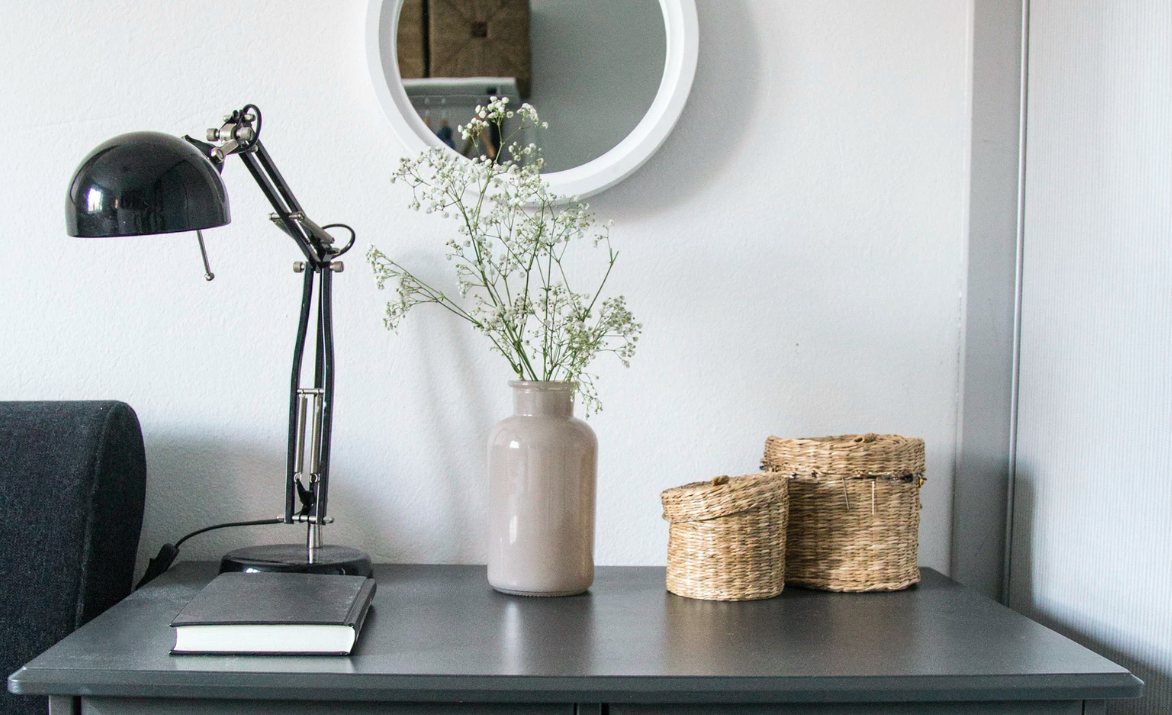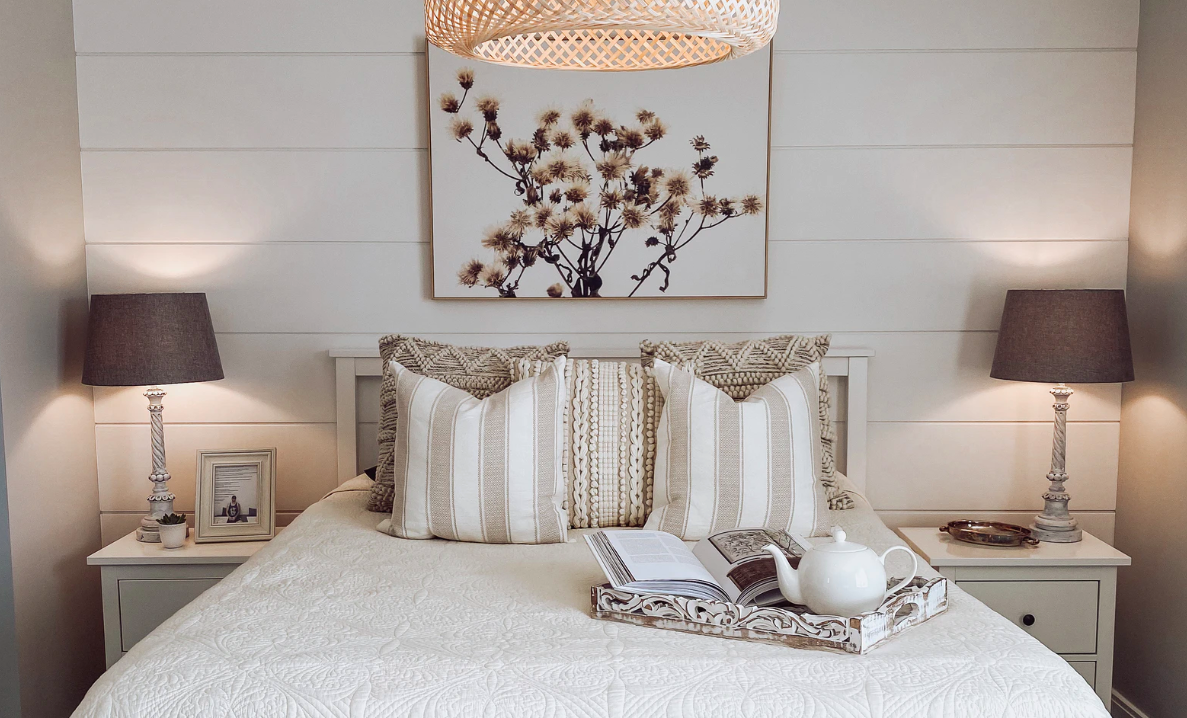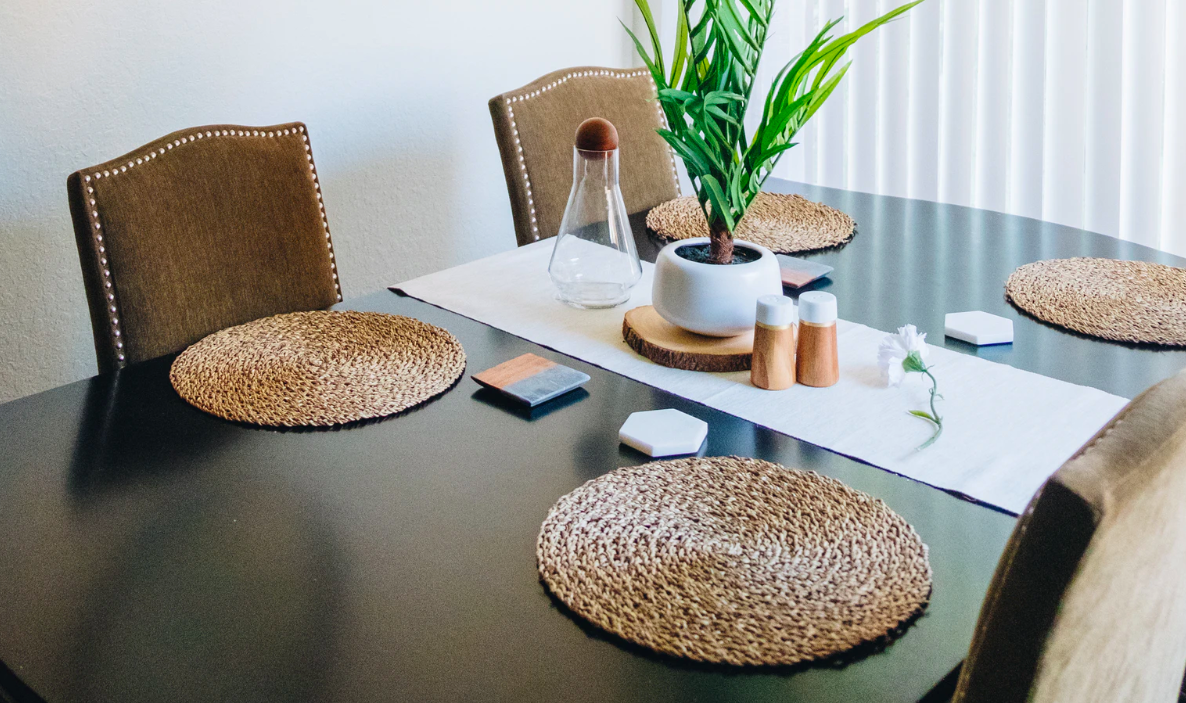Sometimes, even minimalism seems too hard. Sounds backwards, doesn’t it? Yes, minimalism is all about a relaxing, uncluttered, stress-free area. But, at the same time, you might find yourself tired of the process of paring down your hoard of “stuff.” Plus, even if you embrace minimalist design, there are still routine tasks to keep up with. Picking up after the kids every time they get out a toy. Doing the dishes.

Chances are, you’re looking at it all wrong. Minimalism can be about having less “stuff” and keeping the house tidy, but still…that’s secondary. Instead, minimalist design starts not with less stuff, but with looking past the stuff and pinning down a few big design basics. Whether you’re currently renovating or you’ve been settled in your home for years, these tips are going to help you capture the minimalist spirit in your overall design.
The fundamental principle: negative space
There’s a reason negative space is a fundamental in minimalist design (interior design, graphic design, etc.). You must have negative space if you’re to have minimalism. The two go hand-in-hand. You can’t have one without the other.
Usually “negative space” brings white walls and open concepts to mind. While there is a reason for that, it’s not imperative that you have white walls. As long as you nail that negative space we’re talking about, your walls can be any color. And you don’t need a perfectly open-concept home either. Now, we’re not saying white walls and open floor plans don’t help your design. They do. But minimalism starts with intentional use of negative space, not with the color white. After all, you could certainly have white walls in a house that does not display minimalism.
Why negative space?

It’s something graphic designers learn immediately – if you want the eye drawn to a specific element, create negative space around it. But, you say, I have so many pretty pictures I want to display! I want them all to get the attention they deserve. Well, hanging them all on that wall above the dining table isn’t the way to do it. Pick the best one. Hang it. Now you have a focal point, something that draws the eye and makes the ceiling look taller because of all that negative space above it.
Don’t overwhelm your space. And don’t overwhelm your guest’s attention (or your family’s or your own). Be mindful of how much negative space you have. And if there’s not enough, remove unnecessary furniture, knickknacks, and wall art.
A discussion on storage
Now, here’s the downside to negative space. Let’s say you were convinced you needed a large, clean wall in the living room, so you moved the big, clunky, vertical bookshelf, and the dark brown dresser. You hung a beautiful piece of wall art instead. Now you have a bookshelf and a dresser that desperately need a home. You gained negative space, but you lost your precious storage!
Don’t panic. Storage is one of the basics of minimalist design and the single most important thing in any home. You don’t need minimalism to live, but you do need storage. It’s a nonnegotiable. First, we suggest doing a Pinterest search. Looking at pictures is the best way to find storage solutions that will fit into a minimalist design.
Here are our top tips for what to look for:
- Low-profile storage. Remember that bookshelf we said you moved so you could hang that piece of wall art? Consider this – instead of a vertical bookshelf, why not choose a long, low, horizontal bookshelf? Frame your new space with two comfy chairs and pat yourself on the back.
- Built-in storage.
- Floating shelves.
- Drawers. The more drawers, the more places to hide the mess.
Focus on materials
Being minimalistic in your design means you need to be intentional about what you display and what you buy. You may notice that your purchases become more informed, that you have a better sense of style, and that you focus more on the beauty and functionality of any given piece than you previously would have.

The key is to focus on how the piece was made, what it means to you, and how the item will serve you in your home. This goes for everything from cabinets to rugs to lampshades. When your home is uncluttered, everything you put in it becomes important. The textures, the pops of color, and the beauty of each item become more profound. And let’s face it, you’ll appreciate the piece more. Your eye won’t be drawn to clutter and busyness, but to the simplistic beauty of every interesting dynamic.
Love minimalist design even more now?
Finding yourself excited about minimalist design? We hope so. Make a plan of action and tackle the basics first, before anything else. You’ll be glad you did. Looking for more ideas? Check out these 5 habits to start right now for a minimalist mobile home.


